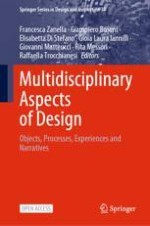This open access book gathers the contributions from the Design! OPEN International Conference, held in Parma, Italy in May 2022. The conference explored the multidisciplinary aspects of design starting from its dimensions: objects (design as focused on the object, on its functional and symbolic dimension, and at the same time on the object as a tool for representing cultures), processes (the designer’s self-reflective moment which is focused on the analysis and on the definition of processes in various contexts, spanning innovation, social engagement, reflection on emergencies or forecasting), experiences (design as a theoretical and practical strategy aimed at facilitating experiential interactions among people, people and objects or environments), and narratives (making history, representing through different media, archiving, narrating, and exhibiting design). The contributions, which were selected by means of a rigorous international peer-review process, highlight numerous exciting ideas that will spur novel research directions and foster multidisciplinary collaboration among different specialists.
